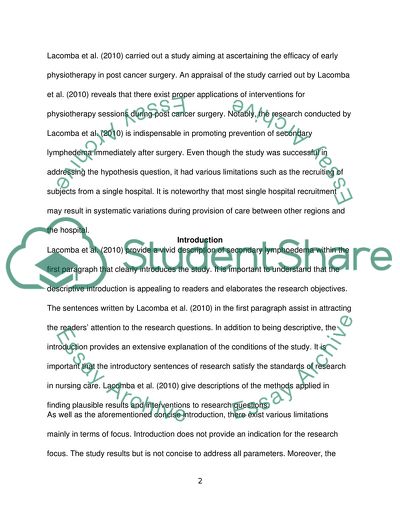Cite this document
(“Early Physiotherapy to Prevent Lymphoedema after Surgery Assignment”, n.d.)
Early Physiotherapy to Prevent Lymphoedema after Surgery Assignment. Retrieved from https://studentshare.org/health-sciences-medicine/1664908-effectiveness-of-early-physiotherapy-to-prevent-lymphoedema-after-surgery-for-breast-cancerrandomised-single-blindedclinical-trial
Early Physiotherapy to Prevent Lymphoedema after Surgery Assignment. Retrieved from https://studentshare.org/health-sciences-medicine/1664908-effectiveness-of-early-physiotherapy-to-prevent-lymphoedema-after-surgery-for-breast-cancerrandomised-single-blindedclinical-trial
(Early Physiotherapy to Prevent Lymphoedema After Surgery Assignment)
Early Physiotherapy to Prevent Lymphoedema After Surgery Assignment. https://studentshare.org/health-sciences-medicine/1664908-effectiveness-of-early-physiotherapy-to-prevent-lymphoedema-after-surgery-for-breast-cancerrandomised-single-blindedclinical-trial.
Early Physiotherapy to Prevent Lymphoedema After Surgery Assignment. https://studentshare.org/health-sciences-medicine/1664908-effectiveness-of-early-physiotherapy-to-prevent-lymphoedema-after-surgery-for-breast-cancerrandomised-single-blindedclinical-trial.
“Early Physiotherapy to Prevent Lymphoedema After Surgery Assignment”, n.d. https://studentshare.org/health-sciences-medicine/1664908-effectiveness-of-early-physiotherapy-to-prevent-lymphoedema-after-surgery-for-breast-cancerrandomised-single-blindedclinical-trial.


